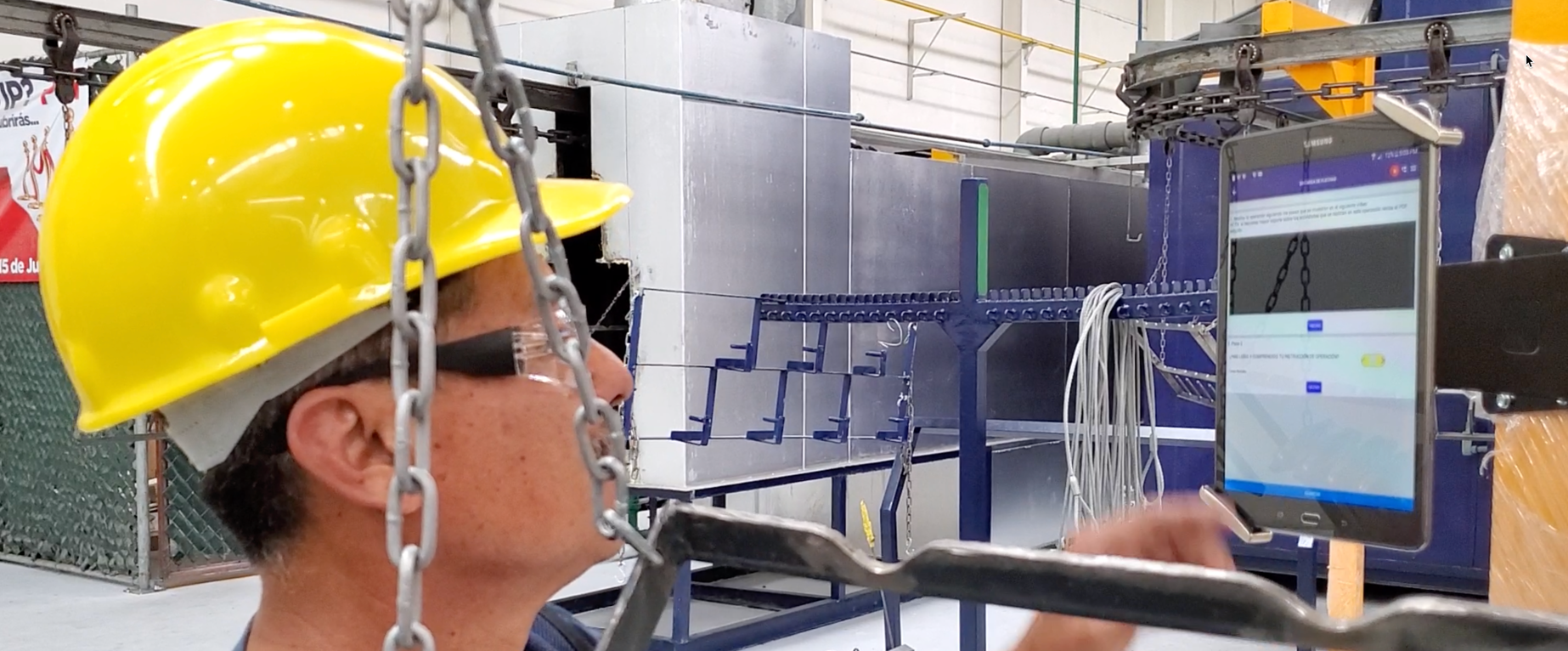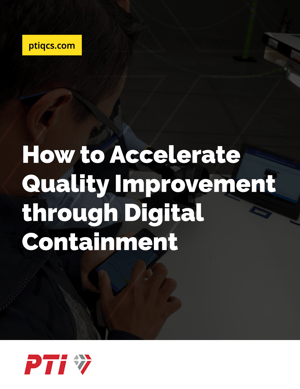Digital containment is an innovative approach to inspection and quality services that delivers process transparency, real-time data and predictive reports with actionable data. The result is a more comprehensive, data-driven approach to inspections that both reduces the time it takes to contain a disruption and directly addresses the risk of future issues.

The cost of quality for a major organization can be in the billions. For smaller OEMs and suppliers the scope of a recall can be a potentially company-closing situation. Digital containment is more than just a reactive solution for common quality issues. It’s a way to proactive address quality concerns at the root - improving process, reporting and culture in ways that can have an outsized impact on the bottom line. There are several roles technology can play in this process. Let’s take a closer look at six of these impacts and how to factor them into your own quality containment plans.
Digital Records for All Inspections
By shifting inspections to a digital platform, all records are stored in a central location that is immediately accessible to all decision-makers, engineers, and containment providers whenever they are needed.
Instead of starting from scratch whenever a quality disruption occurs, you can more efficiently learn from past mistakes and improve quality over time. If you work with a digital quality containment provider, you can further learn from the efforts of other companies who have successfully addressed issues similar to yours.
Evaluation of Pattens with Big Data
Data is valuable, but it’s also massive. In the past, it took large teams of people months or even years to untangle the hidden value in the data collected by your frontline employees, sensors, inspectors and more.
Today, not only is all data instantly captured by a network of devices and applications, but it can be rapidly evaluated using Machine Learning and AI-based systems designed to evaluate large data sets in real-time. The result is the ability to see patterns as they emerge and address them before they become major issues.
Real-Time Monitoring and Inspection Management
IIoT and wearable devices make it possible to monitor almost any aspect of a manufacturing plant seamlessly. This provides several benefits, including:
- Actionable data about operations that can be leveraged to improve efficiency and reduce the risk of disruption.
- Objective measurement of worker performance on the floor - including stress levels.
- Quicker response times if there are issues in production, ideally reducing the number of parts impacted.
- Centralized management of inspection processes with digital records to ensure higher levels of accuracy and full traceability.
Behavioral Prediction
While Sales has been leveraging data to respond to key events throughout the calendar year, Operations is only just unlocking the power of predictive analytics. There are now several ways you can leverage machine learning and big-data analysis to evaluate behavioral patterns that influence quality in your operations. For example:
- Preparing for Seasonal Shifts - Data can provide insights not only on how operations changes throughout the year, but in how employee performance changes at different times of the year. Going into the end of the year holidays, for example, companies know to double shield quality as people start thinking more about life and less about work. After the holidays, increased fatigue can lead to distraction. Data can help identify how much of an impact these things have and how to respond appropriately.
- Industry-wide Changes - If a major change occurs that could influence your production line, behavioral prediction can help identify the impact it will have on key elements.
- The Ripple Effect of a Major Disruption - A significant recall at the OEM level or a labor disruption can have a massive impact downstream. With the right technology, you can both analyze previous instances to see what risks you might face and predict the potential impact on your front line of such a disruption
Better Utilization of Data from Existing Equipment
Organizations are investing in technology that extracts valuable data from existing equipment. It’s increasingly possible to monitor and respond to real-time conditions on the floor, both to tackle issues as they occur and prevent future ones from developing. Specific examples include:
- Process control with machine vision and real-time monitoring to inspect and analyze parts and systems automatically with multiple cameras.
- Machine learning to monitor and adapt to changing conditions for both human and co-bot operators on the front line.
- Wearable technology in the form of smartwatches, harnesses and even AR glasses to actively monitor employees for shifts in energy, stress, and performance levels that could impact safety or quality
Improved Training for Employees Going into a Facility
Digital training is an important element of digital containment and inspections. By implementing e-learning for all workers, it is easier to ensure a higher degree of compliance through digital checklists and work instructions. Containment employees are already trained when they enter a facility, with safety and compliance embedded into the process. For your employees, this has a similar impact, ensuring a higher quality of Standard Work and a centralized method by which to provide new instructions or address concerns.
 Digital quality containment can have an immediate and outsized impact in reducing the risk of quality problems in an organization and responding to issues when they do occur. Learn more about how digital quality containment is helping OEMs and suppliers build a culture of quality and create value that helps their organizations grow in our eBook, How to Accelerate Quality Improvement through Digital Containment.
Digital quality containment can have an immediate and outsized impact in reducing the risk of quality problems in an organization and responding to issues when they do occur. Learn more about how digital quality containment is helping OEMs and suppliers build a culture of quality and create value that helps their organizations grow in our eBook, How to Accelerate Quality Improvement through Digital Containment.



